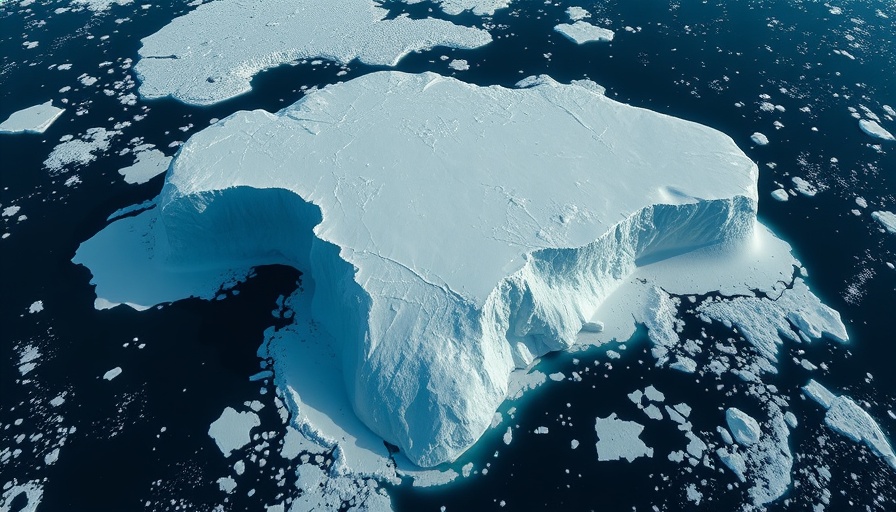
The Iceberg that Could Change the Ecosystem of South Georgia
The recent grounding of the world’s largest iceberg, A-23A, off the coast of South Georgia Island has prompted scientists to consider the potential implications for local wildlife and ocean ecology. Measuring 1,240 square miles, A-23A’s journey across the Scotia Sea showcases both the beauty and fragility of our planet's natural systems. As it rests upon a shallow shelf near South Georgia, the iceberg is poised to become a crucial element in the local ecosystem, potentially revitalizing marine life in the surrounding waters.
Understanding the Natural Journey of Icebergs
Icebergs like A-23A are much more than just chunks of ice—their life cycle contributes to the ocean’s health. A-23A began its journey after breaking off from the Filchner-Ronne Ice Shelf in 1986. Over the years, it has floated through warmer waters nicknamed "iceberg alley." As it approaches land, scientists have a unique opportunity to observe its effects on surrounding wildlife.
Impact of A-23A on Local Wildlife
While there are concerns about the iceberg’s impact on feeding grounds for local inhabitants, scientists are also optimistic about the nutrients released from melting ice. Professor Nadine Johnston from the British Antarctic Survey notes, "It’s like dropping a nutrient bomb into the middle of an empty desert," suggesting the possibility of an explosion of life, where the melting iceberg feeds the waters with vital nutrients that support marine ecosystems.
The Complex Relationship Among Icebergs, Marine Life, and Climate Change
As A-23A disintegrates, it may create a favorable environment for burgeoning marine life, yet it highlights a greater issue at play: climate change. The increase in iceberg formations is linked to melting ice sheets due to rising global temperatures. This complex relationship raises questions about how the future of icebergs will interact with marine ecosystems worldwide.
Long-Term Observations: What Lies Ahead?
Glaciologists warn that icebergs like A-23A will inevitably break up, but their influence can last longer than expected. The nutrients released as A-23A breaks down could fertilize phytoplankton blooms, vital for the food chain. Andrew Meijers, an oceanographer, suggests that monitoring the changes in species distribution will provide key insights as we adapt to shifts in climate and ecological balance.
Preparing for Icebergs in Global Waters
The presence of A-23A, while largely non-threatening to shipping lanes at the moment, could alter navigation for fishing vessels as it begins to fragment. Fishermen are prepared for the challenges presented by this colossal iceberg. As the fishing season approaches, caution will be necessary, but the enhanced nutrient circulation may provide a more robust feeding ground for local fish populations.
Conclusion: Climate Insights from A-23A
The grounding of the A-23A iceberg serves as a poignant reminder of nature’s interplay with climate change. As we continue to document its impact on the South Georgia ecosystem, it’s crucial for policymakers and ecological stakeholders to carefully consider its implications for future conservation efforts and climate strategies.
 Add Row
Add Row  Add
Add 




Write A Comment